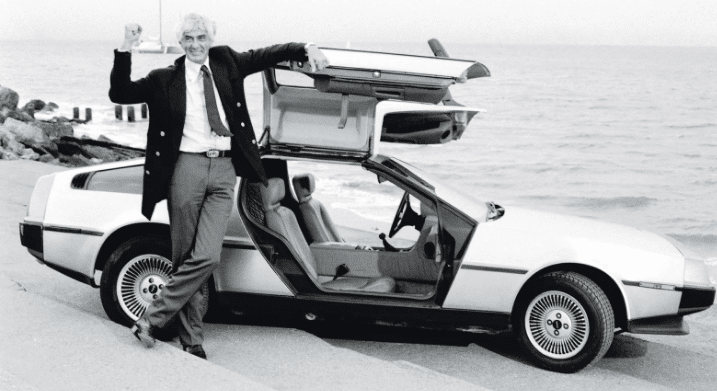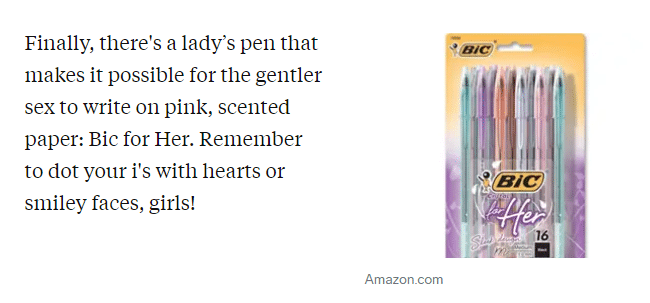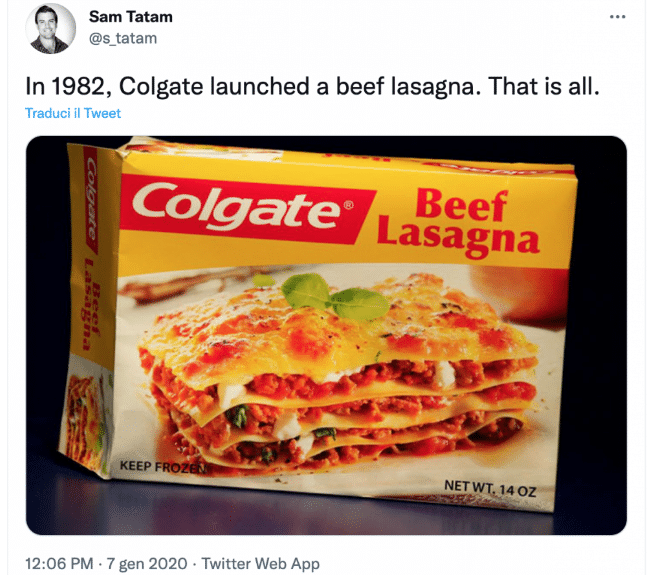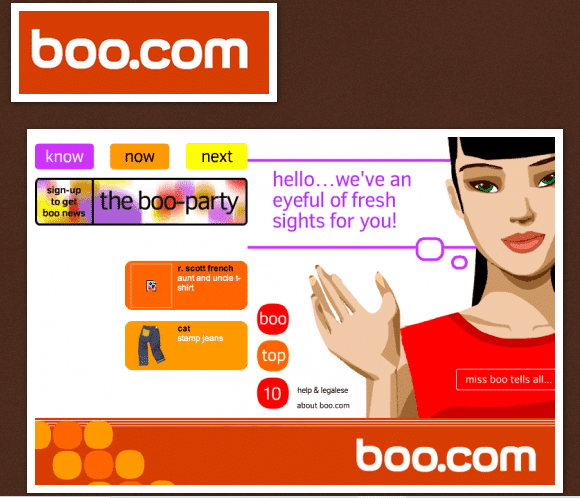Smart glasses, futuristic cars, electric pens and beauty masks. What do they have in common? Epic failures – resounding failures – but each in its own way.
“Have you ever tried? Have you ever failed? It doesn’t matter. Try again. Fail again. Fail better.”
The phrase, attributed to the great Irish playwright, writer and poet Samuel Beckett restores theessence of failure to us in an exemplary way.
Every great innovator or innovator has often found obstacles in the way. Some ideas are sometimes too early for the market, and other times marketing and technology do not work.
In any case, from every failure there is always something to learn.
Let’s take a closer look at some cases of momentous failures in the hi-tech world and beyond, starting with one of the most glaring, Google Glass.
Sommario
- 1 1. Google Glass: the smart glasses out of time (and market)
- 2 Google and augmented reality
- 3 What we learned from the epic fail Google Glass in 3 points
- 4 Museum of Failure, L.A.: when failures are put on display
- 5 2. DeLorean, the car of the future
- 6 3. The Bic For Her pen.
- 7 4. Rejuvenique: creepy beauty mask.
- 8
- 9 5. Colgate lasagna.
- 10 6. Boo.com and the dot.com bubble.
- 11 About Fastbrain and why to choose it
- 12 Contact us for a free consultation
1. Google Glass: the smart glasses out of time (and market)
Google Glass, Hololens, Spectacles, Amazon Echo Frames. Each company has launched its own smart eyewear, all of which have the common denominator of getting out of the market.
The causes of these failures include a real economic environment that is not yet ready, some technological gaps, excessive marketing, and more.
The New York Timesarticle “Why Google Glass Broke” discusses how Big G’s smart glasses had, in 2012, the year of their launch, a real moment of glory and unprecedented media coverage.
Before announcing its abrupt demise, in fact, Google Glass:
- They have been called “one of the best inventions of the year” by Time magazine;
- They appeared in an episode of The Simpsons;
- They got as many as 12 pages of in-depth coverage in Vogue magazine;
- They have been tested by VIPs and presidents around the world, from Prince Charles to Oprah Winfrey. And much more.
Yet, Google Glass has been one of the most resounding flops. The reason is quickly stated.
The reasons for failure
The Forbesarticle “Why Google Glass Failed: A Marketing Lesson” listed some of the key critical issues in the marketing dynamic. First, there was no real product launch.
Google Glass was advertised in an unconventional way, through various celebrities and early adopters, but without one key element: an actual purchase date, which thwarted the entire marketing strategy.
Despite the great buzz around the product, the absence of a true paid-for advertisement in which to highlight the strengths of Google Glass thwarted its message and key benefits.
In addition, no concrete explanation as to why this was an outstanding product that could have made a difference.
Unclear communication about the product’s main benefits has, therefore, left potential customers in a state of uncertainty and confusion, corroborated by not easy availability.
The delay in distribution to physical and online outlets contributed to the loss of interest and failure of the product.
Last but not least is the issue of privacy; from the fear of being filmed during private moments, such as in public restrooms, to the ban in movie theaters, casinos in Las Vegas, and other places where out of concern for hidden recordings.
As of March 15, 2023, Google has announced that it will permanently stop production of Google Glass for businesses.
After the closure of the Explorer Edition in 2013, Big G decided to target businesses exclusively, excluding the general public.
Google and augmented reality
In 2022, Google has indicated that it will continue to work on Augmented Reality technologies, with “rumors” about the possibility that the glasses could go so far as to translate speech from one language to another in real time.
The way is mapped out. From Apple to Meta, in collaboration with multinationals in the industry (e.g., EssilorLuxottica), work is underway to bring smart glasses with minimonitors connected to the metaverse to market in the near term, with next desirable releases in 2025.
What we learned from the epic fail Google Glass in 3 points
- Do you have a perfect product for your market? It also always exploits paid media to reinforce free advertising;
- Clearly communicates the daily benefits of the product;
- It releases product quickly and widely to take advantage of momentum.
Google Glass, along with other products featured in momentous failures, are on display at the Museum of Failure in Los Angeles.
Museum of Failure, L.A.: when failures are put on display
In Los Angeles, there is a museum of failure, active mainly with traveling exhibitions around the world.
The concept behind the exhibition, lies in the fine line between innovation and failure.
First created by clinical psychologist Dr Samuel West in Helsingborg, Sweden, in 2018 the museum moved to Hollywood, making traveling exhibitions around the world.
Most innovation projects fail.
This is Dr. West’s central message: sooner or later all the most successful innovators experience the bitter taste of failure.
Often it is a matter of poor timing. Projects presented at the wrong time, when the market is not yet ready, such as Google Glass. Or, products with the wrong, repelling concept, such as Colgate’s lasagna.
The purpose of the museum is also to provide “a unique insight into the risky business of innovation.”
Here are some items put on display:
2. DeLorean, the car of the future
The mythical DeLorean time machine from Back to the Future, with doors that opened like gull wings, actually existed but never “took flight.”
Blame former General Motors executive John DeLorean’s financial disasters, which, arguably, permanently ruined his reputation.
Also hindering the success of the futuristic car were production delays, poor performance and a sales fiasco likely due to an unfavorable economic climate. This Wired article tells the full story.

Image source: https://www.gqitalia.it/tech-auto/article/john-delorean-storia-auto-foto
3. The Bic For Her pen.
Designed “to fit in a small hand,” this Bic pen is a total failure, at least socially and culturally.
Mocked by users since its release, with pink and purple colors and expressly created for women, despite being produced in 2011, the Bic For Her pen is anachronistic and punches against gender stereotypes, 50 years after the feminist movements.
Here are some users’ sarcastic comments about Bic for Her.

And here is the hilarious video that famous American comedian Ellen De Generis dedicated to the much-discussed pen:
4. Rejuvenique: creepy beauty mask.
It did not even last a year to market this “beauty mask” (1990 – †1990).
His intent was to tone facial muscles with electricity, applying it three or four times a week to the face in 15-minute sessions.
On the packaging is the image of testimonial Linda Evans, well-known American star of the series Dynasty.
The reviews, talked about the feeling of having “a thousand ants” biting your face. The device was never approved for safety, and in addition, the design of the mask left something to be desired, looking mostly taken from a horror movie.

Image source: https://www.vintag.es/2022/05/rejuvenique-electric-facial-mask.html
5. Colgate lasagna.
The well-known multinational company Colgate – Palmolive launched Beef Lasagna in 1982, a resounding epic fail, judging by the viral criticism.
The association with toothpaste is impossible to remove. Actually, it is a fake, hatched from a possible mockup.
The product, in fact, never went into production, but was only an idea, magnified by well-known newspapers such as the Mirror and Food and Wine magazine.
The media “tam tam” forced the company to issue a legal statement, and Prospect magazine devoted an exhaustive article to him with the whole story.

Image source: https://outoftheboxmag.it/una-confezione-inventata-diventata-famosissima/
6. Boo.com and the dot.com bubble.
Not an item included in the Museum of Failure: Boo.com is a classic example of the right idea at the wrong time .
Founded in 1998, the dawn of the dotcom bubble-when being an Internet-related company was often enough to be overvalued by analysts and investors-it was founded by Swedes Ernst Malmsten, Kajsa Leander and Patrik Hedelin and lost $135 million in two years.
The target audience were “cool and chic” people who wanted to buy their clothes online. It also contemplated the personal shopper: a pixilated Mrs. Boo.
Among the main criticisms were excessive spending on global marketing and advertising, slow and complicated website, described by a Swedish newspaper as “a fuzzy version of hell.”

Image source: https://dctinternetmarketing19.blogspot.com/2015/09/boocom.html
While failures are part of the history of technology, many of these “epic failures” offer valuable lessons for the industry:
- The first is that innovation and functionality must always be in balance;
- The second is the careful consideration for the needs expressed by the market;
- The third is the need for thorough pre-launch product testing.
Every history teaches us that, any innovative project, beyond ephemeral enthusiasms revolving around the creation of a “mythological” product, must flow into a concrete object that can be easily found, useful for its target audience and in line with the expectations created by the world of marketing and advertising.
About Fastbrain and why to choose it
Fastbrain Engineering Ltd. Certified Partnerof leading Technology Players, including RealWear®, Brother, Lenovo, Synology, Graetz, SiComputer, Canyonoffers customized purchasing solutions tailored to the needs of professionals. It also offers pre- and post-sales support,including operational rental. We are acentralplayer in ICT wholesale distribution and one of the leading players throughout the country in the IT and technology products distribution market. A key feature and competitive advantage is the selection of top brands and leading products in the most popular product categories.
Info:
info@fastbrain.it
| Tel 011.0376.054
Contact us for a free consultation
Sources:
- https://www.nytimes.com/2015/02/05/style/why-google-glass-broke.html
- https://www.agi.it/innovazione/news/2021-09-16/flop-evoluzione-occhiali-intelligenti-13871920/
- https://www.forbes.com/sites/siimonreynolds/2015/02/05/why-google-glass-failed/
- https://www.wired.it/gadget/motori/2015/10/21/john-delorean/
- https://www.businessinsider.com/the-bic-pens-for-women-that-everyone-is-laughing-at-2012-8?r=US&IR=T
- https://www.prospectmagazine.co.uk/ideas/philosophy/39799/what-a-viral-fake-lasagne-taught-me-about-failure
- https://www.theguardian.com/technology/2005/may/16/media.business
- https://www.ansa.it/sito/notizie/tecnologia/hitech/2023/03/20/google-chiude-il-progetto-glass-stop-a-occhiali-per-aziende_b294e007-8194-48a3-ab15-82a7237025c1.html
- https://www.wired.it/economia/business/2018/04/01/prodotti-flop-fallimenti-commerciali/
- https://www.smh.com.au/traveller/inspiration/museum-of-failure-us-trump-board-game-google-glasses–inventions-that-were-epic-disasters-20180809-h13qey.html
- https://youtu.be/slNKzCovPqg
- Museum of Failure: failuremuseum.com

